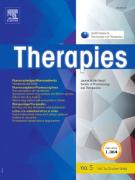Pharmacotherapy of substance use disorders in the neuroscience-based nomenclature (NbN) - 10/04/21
 , Mikaïl Nourredine b, e, Benjamin Rolland b, c, d
, Mikaïl Nourredine b, e, Benjamin Rolland b, c, d| pages | 10 |
| Iconographies | 0 |
| Vidéos | 0 |
| Autres | 0 |
Summary |
In the field of substance use disorders (SUDs), medications are frequently labeled according to their main symptomatic effect (e.g., “anticraving drugs”) or according to imprecise and sometimes old concepts related to treatment strategies (e.g., “replacement therapies”, “antabuse drugs”, or “substitution treatments”). By contrast, the neuroscience-based nomenclature (NbN) offers a clearer and more consistent rationale, according to which the main element of classification is based on the pharmacological mode of action of the medication. This review aims to display the different approved treatments used in SUDs, and to discuss the pros and cons of using this new conceptual framework in the field of addiction. According to the NbN classification, medications approved in the different SUDs can be classified in the different following categories: 1) nicotinic drugs; 2) GABAergic drugs; 3) opioid drugs; and 4) others. More specifically, medications can be distinguished between whether they mimic the same pharmacological action of the “substance” whose use should be stopped or reduced, or whether they target other more general pharmacological systems, that are supposed to be common to all SUDs, as they reflect the “universal” addiction process. The NbN offers obvious advantages, compared with previous classifications. In particular, it allows to no longer mix drugs with very different pharmacological targets under the same label. The main limitation of the NbN, when applied to psychopharmacology in general, and to SUDs medications in particular, is that drugs frequently have a “dirty” action, with multiple pharmacological targets. In this respect, it may be hard to classify drugs according to the NbN classification, without making the individual profile of each medicine more complex.
Le texte complet de cet article est disponible en PDF.Keywords : Neuroscience-based nomenclature, Addiction, Substance use disorder pharmacology
Plan
Vol 76 - N° 2
P. 127-136 - mars 2021 Retour au numéroBienvenue sur EM-consulte, la référence des professionnels de santé.
L’accès au texte intégral de cet article nécessite un abonnement.
Bienvenue sur EM-consulte, la référence des professionnels de santé.
L’achat d’article à l’unité est indisponible à l’heure actuelle.
Déjà abonné à cette revue ?

